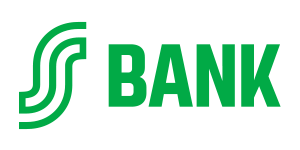
Finland’s top retail bank applies AI to improve customer service and credit scoring

Automated processes allow for faster and more accurate decision making.

Faster loan processing time via analytics
S-Bank achieved this using • SAS® for Machine Learning and Deep Learning • SAS® Model Manager • SAS® Intelligent Decisioning • SAS® Visual Analytics • SAS® Visual Statistics powered by SAS® Viya® on Microsoft Azure
S-Bank provides better customer service and faster, more accurate loan processing time using SAS Viya on Microsoft Azure
Banks are at the frontline of the economic disruption brought about by the COVID-19 pandemic. Central banks, large universal banks, small to medium-sized regional banks, FinTechs and challenger banks are all facing unprecedented challenges and risks, including:
- A hyper-competitive market for loan products, especially with such low interest rates.
- Predicting externalities that could harm their bottom line, like pandemics or natural disasters due to climate change.
- Better protecting personal identifiable information (PII) data with harsh penalties for breaches due to GDPR regulations.
For banks to succeed in this harsh climate, they need loyal customers. S-Bank in Finland ranks No. 1 for customer loyalty, outperforming even well-known brands such as home furnishings retailer IKEA and auto parts retailer Motonet, according to Finland’s annual Customer Loyalty Index.
So how does S-Bank stay focused on customers in a hyper-competitive market with low interest rates, evolving loan products and an unpredictable economic climate? It has had great success using analytics and artificial intelligence (AI) for customer intelligence, credit scoring and improving business outcomes. In particular, the bank is using SAS for Machine Learning and Deep Learning on SAS Viya to provide better customer service via faster and more accurate loan processing times.
SAS didn’t just provide us with one solution that solved one problem – SAS covered the entire analytics life cycle and most of our needs. Once we started discussing this within S-Bank, we saw clearly that SAS was a one-to-one match for what we had drawn up and what we needed.Johanna Makkonen Senior Analyst S-Bank
“Data is the future,” says Johanna Makkonen, Senior Analyst at S-Bank Finland, who has developed a vision of an analytics factory that will put AI in the hands of all data scientists and self-service business intelligence tools on every desktop.
S-Bank chose to partner with SAS to automate its processes with a focus on the customer and speeding up the credit-lending processing time.
Makkonen has worked at S-Bank for the last eight years within various analyst roles. Currently, there are four analysts on her team and 12 working with analytics at the company. Makkonen’s team is responsible for ensuring that S-Bank is taking a data-driven approach within all areas of the business.
“Before we started using SAS, we had been using predictive models for a few years, but we did not have a structured way of working with them, creating them and monitoring them. They were not scalable; they were like a black box model to us,” Makkonen explains. “We drew out the modeling process identifying our business-critical needs, particularly those that the former technical solution did not meet, and it was simply a click with SAS.”
A powerful partnership with SAS and Microsoft
To achieve their goals, Makkonen and her team knew they would need to incorporate new and old data sources, automation and applied intelligence. They also knew their systems needed to be standardized, but flexible enough to adapt and improve model performance while maintaining compliance with local, regional and international standards.
After researching options, S-Bank decided to migrate its existing workloads to the cloud with Microsoft Azure and modernize its analytics with SAS Viya. Azure met the bank’s infrastructure needs because of its ubiquity, scalability, rich intelligence and seamless connectivity to other platforms and tools, like SAS.
By modernizing with SAS Viya on Azure, S-Bank has access to improved visual tools and faster performance from running its analytics closer to its data. S-Bank also has incorporated automation and real-time decisioning to reduce process silos and improve management across the analytics life cycle.
Iikka Kuosa is Senior Vice President, Products and IT at S-Bank, and is responsible for ensuring the bank has the capability and tools needed to succeed.
“Working with SAS provides us a more structured way of working with analytics and has helped align our processes, methods and tools,” Kuosa says. “The solution with SAS and Azure has greatly improved how we are working with analytics, particularly the visual capabilities of the tool, which have helped strengthen the alignment between the analytics team and the business development team.”
The solution with SAS and Azure has greatly improved how we are working with analytics, particularly the visual capabilities of the tool, which have helped strengthen the alignment between the analytics team and the business development team. Iikka Kuosa Senior Vice President, Products and IT S-Bank
Analytics allows for real-time decision making
“It is not just about the solution; it is also about the modeling process, visual learning and intelligent decisioning that allows for real-time decision making,” Makkonen says. “This is particularly important because we are using customer data, which is structured data, in our analytics models. Mainly, the analytics department using this data; however, in the future, data will be part of every department and something we would like to put a model on.”
Real-time decision making is particularly important within the banking industry, where customer data is used, and speed and accuracy are key.
“SAS has helped us free up time, as we don’t need to manually take the data and put it in another tool; we simply use the models to get the results,” Makkonen says. “It’s also easy to rerun the models so we don’t need to start from scratch. This saves time and resources for the entire analytics team, which no longer needs to spend time on technical issues. Now they can focus more on business development and creating the models, opposed to maintenance of technical issues.”
Automating the monitoring of models also allows for faster and more reliable decision making and frees up time to investigate the data for new information. It’s also easy to measure the profitability of models.
“This will help to drastically reduce the waiting time for our customers,” Makkonen says.
“SAS Viya on Azure helps us to better serve our customers by providing them more targeted offers, improving customer service and, in turn, the long-term relationship with our customers,” Kuosa adds. “We need to use data to enable better decision making, to better understand motivation and to continue meeting our customers’ evolving needs.”
S-Bank – Facts & Figures
September 2021
3.1 million
customers
No. 1
"Most Responsible Bank" in Finland for the ninth consecutive year, according to the Sustainable Brand Index
€5.9 billion
loan portfolio
A continuous quest to create value from the data
“What I’m most excited about, regarding what we have and can achieve with SAS, is moving toward data science, meaning we can provide really interesting job opportunities and give every analyst the opportunity to become a data scientist,” Makkonen says. “They don’t need to know how to code as the tool guides them, so it is easier for a junior analyst to become a data scientist.”
This means increased value for the business, as analysts can do more of the business development and search for new areas and potential. This shift changes and expands their roles, making analysts less technical and more advisory, allowing them to provide increased value to the business.
“The most innovative part of the SAS technology is the automated machine learning,” Makkonen says. “No other tool has provided us with this capability; we simply turn it on and let the analytical models do the work, which allows us to focus on business improvement rather than just statistics. I have never seen that anywhere before.”
Data is not only the future within the banking world. To succeed in any industry, you need to be able to combine data and business knowledge to help find the best solution. Analysts need to work closely with the business goals to achieve the optimal results for the company.
The banking industry is strictly regulated, and it is extremely important that the data models are compliant with the relevant regulations. “Using SAS Analytics and the automated reports help us identify issues, as do alerts in models,” Makkonen says. “The solution makes it easier for us to ensure we are compliant.”
S-Bank is actively innovating and building new models based on feedback from the business development and sales teams, and implementing these machine learning models provides huge saving potential.
Using SAS Analytics also makes a difference for S-Bank customers, as it speeds up both the loan processing time and accuracy for them.
“SAS keeps us one step ahead of the competition,” Makkonen says. “I really enjoy working with SAS, and we get a lot of help on the complex areas around the analytics life cycle. What’s more, we are lucky as SAS has some of the best experts.”
“SAS has provided tools that make it easier for our business to succeed,” Kuosa adds. “And these tools are much easier to use for everyone within the organization, removing silos and allowing us to better serve our customers.”
